The EVGA 7300 GS: A New Quality Budget Card From NVIDIA
by Josh Venning on February 20, 2006 12:23 PM EST- Posted in
- GPUs
Performance Continued (Medium Quality)
Because the performance that we saw on these games at high quality settings were so low, we ran a second set of benchmarks with the graphic settings at medium for each of these games at the same resolutions. This should give us a better idea of performance, as these games can still be enjoyable with certain effects like full dynamic range (in HL2LC) disabled. For Battlefield 2 and Quake 4, we simply used the overall medium graphics setting that these games both provide, and with Halflife 2 Lost Coast, we simply turned model and texture detail to medium, and set the shadow detail to low. We also set the HDR effects to "bloom" only and water reflections to "simple".
Battlefield 2 Performance (medium quality)
Because the performance that we saw on these games at high quality settings were so low, we ran a second set of benchmarks with the graphic settings at medium for each of these games at the same resolutions. This should give us a better idea of performance, as these games can still be enjoyable with certain effects like full dynamic range (in HL2LC) disabled. For Battlefield 2 and Quake 4, we simply used the overall medium graphics setting that these games both provide, and with Halflife 2 Lost Coast, we simply turned model and texture detail to medium, and set the shadow detail to low. We also set the HDR effects to "bloom" only and water reflections to "simple".
Battlefield 2 Performance (medium quality)
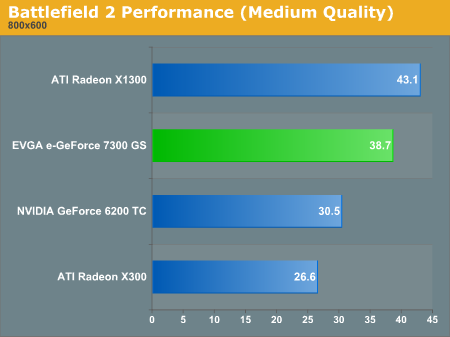
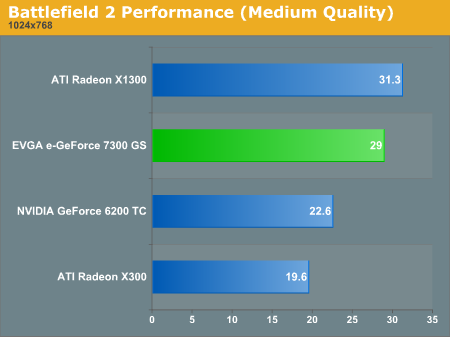
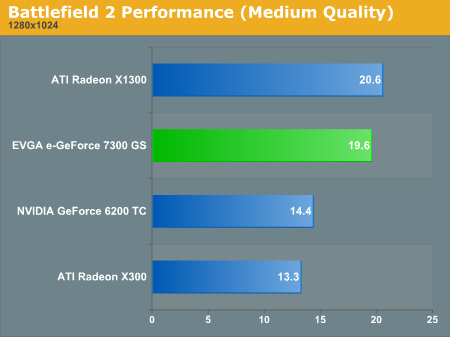
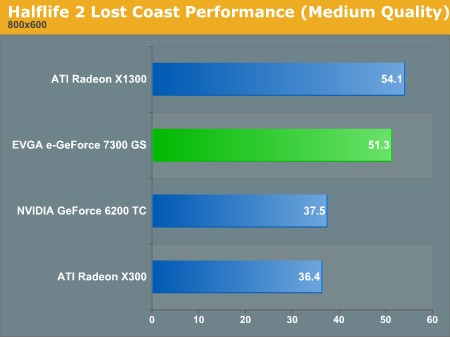
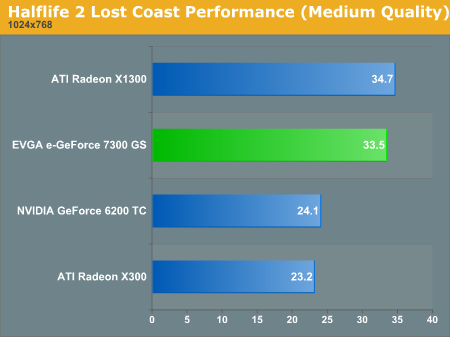
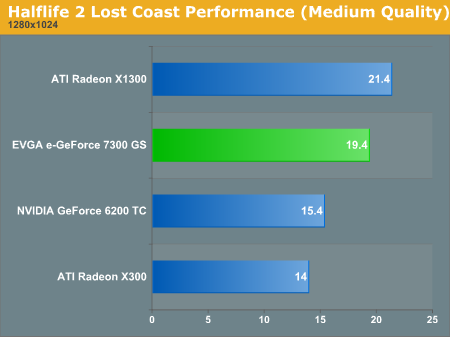
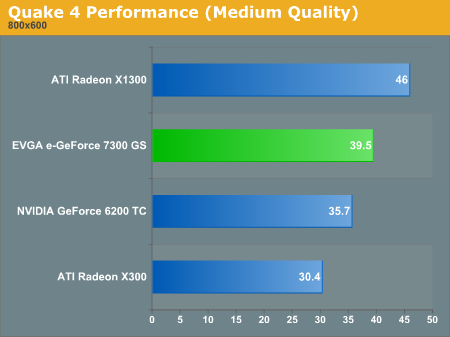

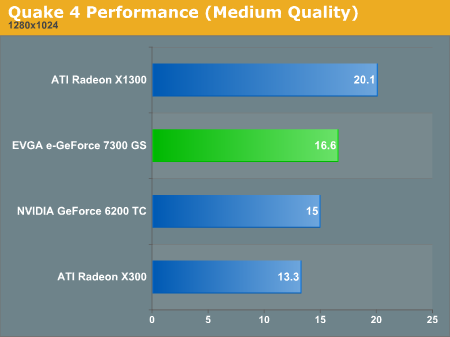










48 Comments
View All Comments
agent2099 - Monday, February 20, 2006 - link
Fanless heatsinks should be the standard for these budget cards.Egglick - Monday, February 20, 2006 - link
The 7300 is supposed to have all the same video features that the 7800 series has, so it should perform in the same way that a 7800 would to a X1900.The 7300GS is certainly a decent card for the price, but the X1300 is a better card. ATI has better video playback quality right now, and many of the X1300's are available with fanless heatsinks. Add to that that the X1300 has slightly better gaming performance and is available for the same price, and it's a no brainer.
Patrese - Monday, February 20, 2006 - link
The X300 is on the top of the chart on the Quake 4 graphic ate 1024x768 High Quality... it is a mistake, isn't it?BTW, could you post a picture of the card? It's kinda useless, but still I'd like to see it! :)
Josh Venning - Monday, February 20, 2006 - link
Thanks for pointing out the mistake, we're fixing it now. We've also added a picture, as per your request. :-)peldor - Monday, February 20, 2006 - link
The memory on the X1300 is also listed as 500GHz. I need me some of that!kalaap - Monday, February 20, 2006 - link
Why did you guyz take down the ASUS RD580 review?cpeter38 - Tuesday, February 21, 2006 - link
That has been HUGELY frustrating for me - both times they have taken it down WHILE I WAS READING IT!!!For a while, I thought I was having some weird computer issues - I actually rebooted twice. GRRRR!!!
brownba - Monday, February 20, 2006 - link
Why test an low-end $80 video card that utilizies system ram in a high-end system with 1GB of ram?Googer - Monday, February 20, 2006 - link
Because that is the same test system used for all benchmarks. If you changed it then the results would not be compairable to what a faster graphics card would do. The idea is to keep all variables the same except for the one that you are working on, it's all fundimental to the scientific method.
http://www.answers.com/scientific+method&r=67">http://www.answers.com/scientific+method&r=67
http://teacher.pas.rochester.edu/phy_labs/Appendix...">http://teacher.pas.rochester.edu/phy_labs/Appendix...
http://en.wikipedia.org/wiki/Scientific_method">http://en.wikipedia.org/wiki/Scientific_method
artifex - Tuesday, February 21, 2006 - link
I think it should have been tested both ways: once for the database entry, where the testbed needs to be the same, but also once in a system budget gamers actually have.By not also testing on a lower end platform, you miss the opportunity to discover that maybe system bottlenecks make it so that all of these cards seem to have identical performance.